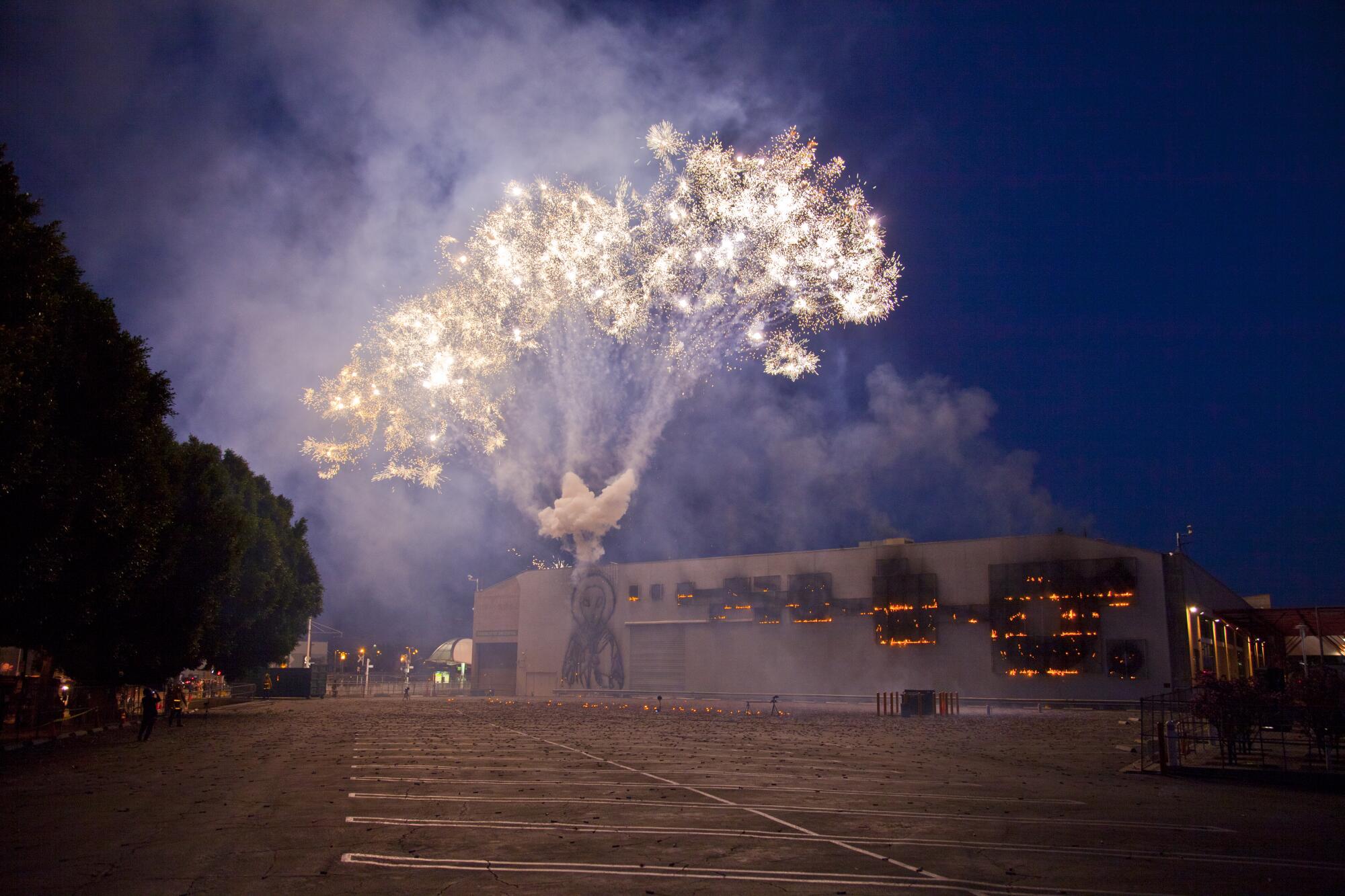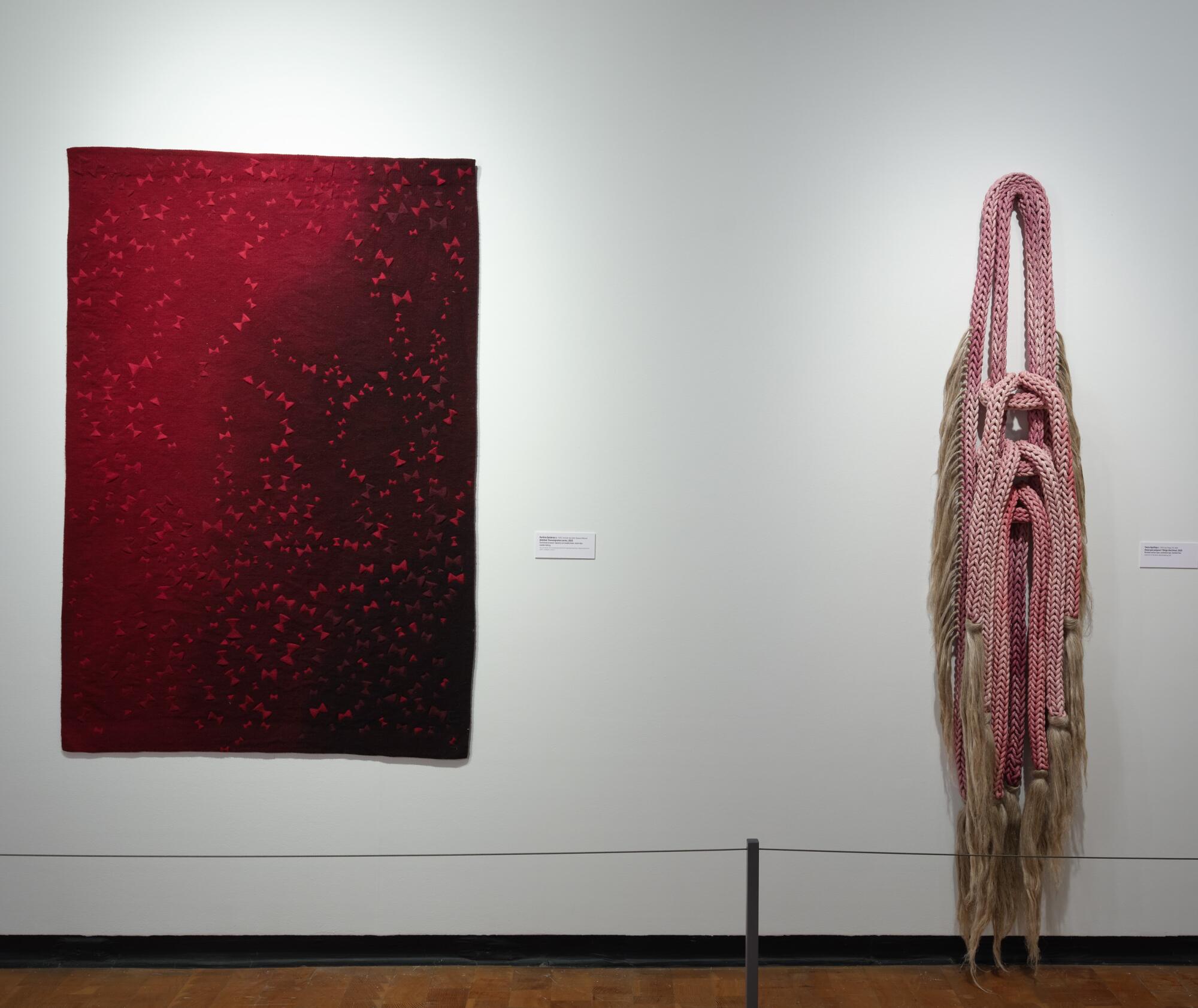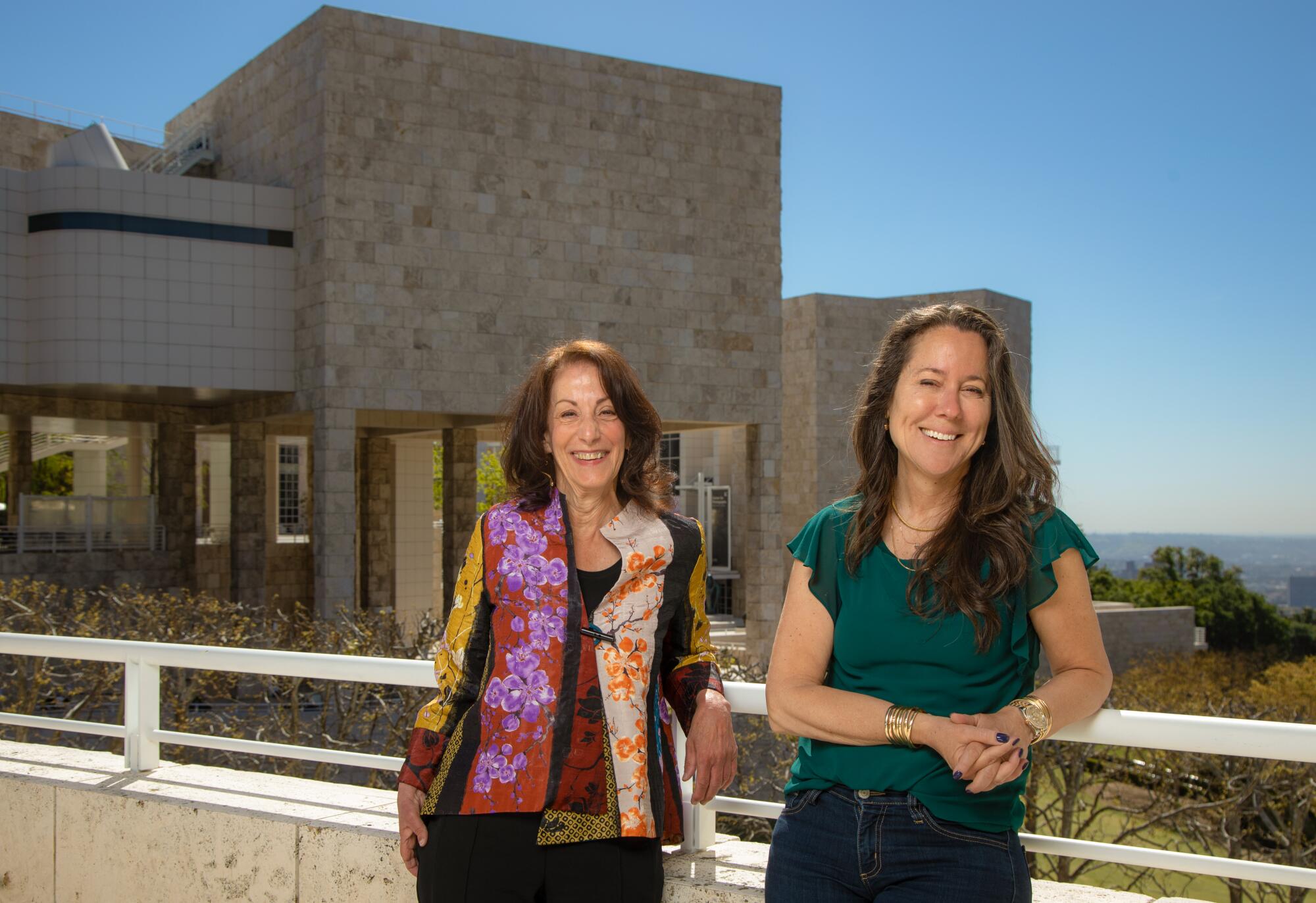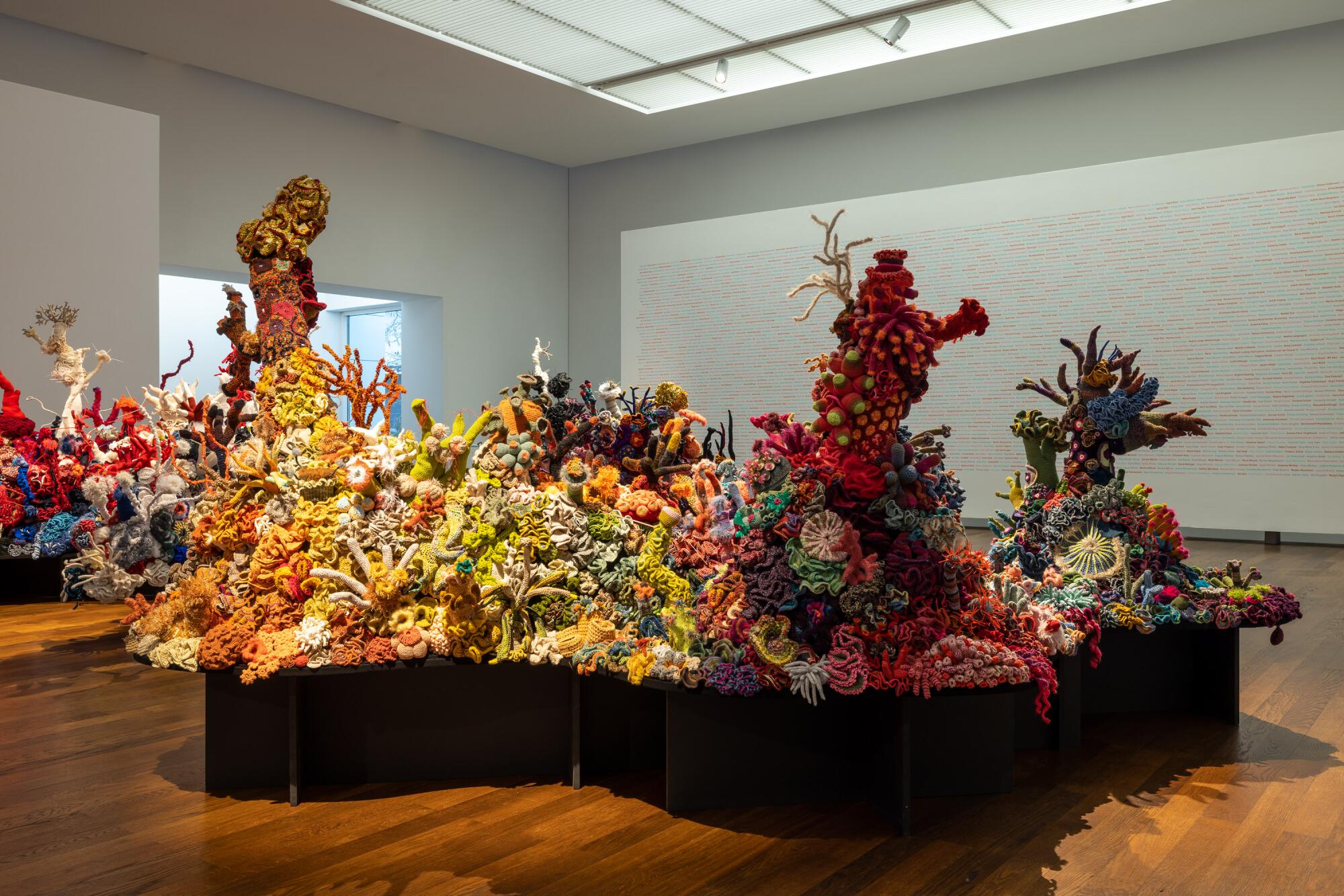
The fall art season will be dominated — or maybe overwhelmed — by “PST Art: Art & Science Collide,” a sprawling array of more than 70 exhibitions at area museums and exhibition spaces, large and small, all subsidized by more than $20 million in grants from the Getty Foundation.
Project topics, according to the information-packed PST Art website essential to navigating the extravaganza, will range from “climate change and environmental justice to the future of artificial intelligence and alternative medicine.” Adjacent to the institutional spotlight, more than three dozen commercial art galleries are planning fall shows related to scientific themes. Innumerable lectures, panel discussions, films and other supporting programs are likewise on the docket. Overall, the program will stretch to San Diego, Riverside and Santa Barbara counties.
The Getty determined the larger topic, which is loosely conceived to encompass sciences hard and soft, including technological upheavals like the ongoing digital revolution; but each participating art organization is the independent curator for its own exhibition. Expect quantum physics and oil paint, AI and video art, climate change and sculpture.
Also, expect some muddle. Theme exhibitions are among the most notoriously difficult for curators to execute successfully. Simplifying art’s mysterious complexities to isolate a work’s basic scientific elements risks being reductive.
How? Science is an inquiry seeking to nail down answers to myriad mysteries of the physical and natural world. Art, by contrast, is an inquiry seeking to open up mysteries of human experience. Artists find questions relevant to life’s perpetually shifting social parameters, with an aim of enchantment even in areas of pain or distress. Truth arrives in multiple guises, so I’m hoping the oddly framed “collision” being explored between art and science won’t produce any casualties. But you never know.
Something of the hazard infringes on “Sangre de Nopal/Blood of the Nopal,” which opened in late July at the UCLA Fowler Museum. (A companion show opens Oct. 6 at the Santa Barbara Museum of Contemporary Art, co-organizer of the “Nopal” presentation.) It’s an early entrant for PST Art, which formally launches on Sept. 15 with a literal bang! — an explosive fireworks performance by Cai Guo-Qiang featuring drones at the L.A. Coliseum. Cai’s loud and fiery “Mystery Circle: Explosion Event,” which featured a two-minute blast of 40,000 mini rockets, was memorably performed at the Museum of Contemporary Art in 2012, so the bigger Coliseum event could be even more spectacular.

The appealing Fowler exhibition features fiber and other art by two gifted Indigenous artists, Tanya Aguiñiga and Porfirio Gutiérrez. Both now work in the Los Angeles area.
Aguiñiga is binational, born in San Diego and raised in Tijuana, and her sculptures, installations and community-based projects involve traditional Mesoamerican craft processes and forms made contemporary. Assembled as a wall-work from knotted rope, for example, “We are a continuous cloth” is an angelic, ghostly figure embedded with stones and other debris gathered from the L.A. River — a haunted spiritual memory made manifest.
Nearby, irregular, rusty red rectangles stamped from an unidentified frame are laid end-to-end on a scroll of white paper that runs across a low, horizontal pedestal before bending up to climb a wall. Titled “Border Wall Ladder,” it’s an echo of Robert Rauschenberg’s 1953 “Automobile Tire Print,” a collaboration with composer John Cage, who drove his Model A Ford in a straight line over a puddle of paint and onto 20 sheets of paper. The car’s tire left a black tread-mark line recording mechanized urban movement, while Aguiñiga’s linear, ladder-like print charts a continuous, age-old human passage that cannot be stopped by artificially drawn political boundaries.
Gutiérrez was raised in Teotitlán del Valle, a small town 20 miles east of Oaxaca, Mexico, and he now works in Ventura. For years he’s been reviving the use of natural rather than synthetic textile dyes, notably including carmine. That vibrant red, a hue prized in Zapotec culture for 2,000 years, is derived from the cochineal, a tiny insect that thrives on nopal cactus. Spain’s 16th century conquest of Mexico created a huge and profitable European market for the rich pigment, hitherto unknown on that continent. Without it, we wouldn’t know the riveting paintings of El Greco or Rubens, Caravaggio or Van Gogh, the way we do today.

Gutiérrez fuses traditions of ancient Indigenous knowledge and modern innovation. In a visually luscious tapestry from his “Transmigration Series,” undulating surges of color that slide between burgundy and ruby-red form the ground for a cascade of small crimson bow-tie shapes, tumbling across the field like seeds scattered in the wind. The shrewd design’s geometric patterning reverberates against the trailblazing Bauhaus tapestries of Anni Albers, as much as those of Gutiérrez’s Oaxacan ancestors, for a work that travels through time and space.
The science operating within cochineal dye and other environmentally sustainable pigments is integral to the work of Aguiñiga and Gutiérrez. Yet, that’s only one element within multifaceted artistic practices that build just as much on social history, visual poetry and artistic dialogue as on ecology. You might leave the enjoyable “Sangre de Nopal/Blood of the Nopal” scratching your head over the supposition of the primacy of an art and science “collision.” It just isn’t there.
Artists, of course, have been quite as fascinated by science as the rest of us, just about forever. Early in the 20th century, French iconoclast Marcel Duchamp described a new “scientific spirit” for avant-garde art, noting the methodical painterly investigations of predecessors Georges Seurat and Paul Cézanne. In our own time, the tumultuous upheaval of World War II was catalytic for artists’ scientific curiosity in subsequent decades, born of everything from the advanced technologies of military radar to the destructive power of the atom bomb.
Postwar art in booming L.A., once the world capital of the aerospace industry, was profoundly affected from the 1950s into the 1970s by science and technology. So, why now? Why is today’s purported collision between art and science on the Getty’s cultural radar screen? Two answers seem likely.

One is popularity. The Getty’s first two Pacific Standard Time outings were anchored in the underdeveloped study of art history in Los Angeles — a specialized field without a mass constituency, but one that is key to an art audience. (A third Getty project, much smaller, considered L.A.’s history of Modernist architecture.) In 2011, “PST: Art in L.A. 1945–1980” surveyed the foundations of an art scene that would soon erupt into the international powerhouse we experience now. Six years later, “PST: LA/LA” unveiled new research into the region’s Latin American and Latino art, just as the nation’s second largest city was on the brink of a definitive demographic shift.
“Art & Science Collide” is the first PST to set aside art history — specifically L.A.’s — in favor of wider topical appeal. Rather than a focus on artists at work in a specific time and place, an abstract theme applicable to any artist anywhere at any time gets the spotlight. Post-pandemic museum attendance has been sluggish everywhere, and the diminished cultural press of recent years reduces exhibition promotion. A definite program swing has taken place, but we’ll have to wait to see if the thematic change succeeds.
The science theme was chosen just before the pandemic began. (It takes years to organize such a vast festival.) During the decade prior to the deadly disruption of COVID, the National Center for Education Statistics recorded a precipitous decline of nearly 30% in students majoring in liberal arts and humanities. The decrease in liberal arts education and the rise of career-driven interdisciplinary STEM — science, technology, engineering and mathematics — are topics of heated academic debate. Colliding art and science melds these opposing sides, while providing a subtle sense of conflict on which all popular entertainments depend.
Although PST had no central planning arm, it’s worth noting that in the multivenue program, extraordinary opportunities were missed. Take the Institute for Figuring, a remarkable, 21-year-old project based in L.A. and led by sisters Margaret Wertheim, a science writer, and Christine Wertheim, a poet, who are “dedicated to the poetic and aesthetic dimensions of science, mathematics and engineering.” The dazzling centerpiece is the “Crochet Coral Reef,” an ever-expanding sculpture inspired by the decimation of Australia’s Great Barrier Reef. (The sisters were born in Brisbane.)

The project is a global community art initiative, produced mostly by thousands of women who crochet colorful, breathtakingly beautiful reef-like forms according to principles of hyperbolic geometry. “Crocheting is an algorithmic process that can be used to build complex shapes very easily,” Margaret Wertheim once explained to The Times. “It’s like using pixels, only in 3-D.”
Bits and pieces of the amazing reef have been shown locally over the years, including at Track 16 Gallery and ArtCenter College of Design in Pasadena, where a modest sample will be part of a PST group show, “Seeing the Unseeable: Data, Design, Art.” (Last year, USC’s Fisher Museum presented a commercially linked exhibition by a little-known Indonesian artist who has been producing an ersatz version of the IFF project.) But you’d have to travel, most recently to Austria’s Schlossmuseum Linz or the Gustav-Lübcke-Museum in Hamm, Germany, to get a substantive overview of the enormous and exceptional work of art. A more ideal moment for organizing a major L.A. museum show to give the reef its public and scholarly due is hard to imagine, but for PST it did not happen.
The other likely reason for the change in PST direction is the mounting existential threat of climate change. As the festival opens, Earth will have experienced well over a year of sustained, record-breaking heat. The deepening crisis deserves every bit of emphasis that the Getty is positioned to give it.
The PST Art Climate Impact Program was launched to help participating institutions navigate sustainability issues for their exhibitions, including shipping, travel and materials. Next year the Getty will host a major L.A. conference on environmental responsibility for museums and galleries, partly based on reports gleaned from PST projects. Practical growth in institutional sustainability may turn out to be the most welcome and longest lasting effect, once art collides with science this fall.
More to Read
The biggest entertainment stories
Get our big stories about Hollywood, film, television, music, arts, culture and more right in your inbox as soon as they publish.
You may occasionally receive promotional content from the Los Angeles Times.












